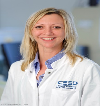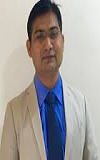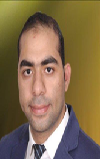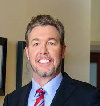Day 1 :
- Kidney Transplantation
Location: Atlanta
- General surgery
Location: Atlanta
- Islet and Pancreas Transplantation
Location: Atlanta
Session Introduction
Elisa Maillard
University of Strasbourg, France
Title: Islet transplantation: Input of biomaterials for islet survival

Biography:
Elisa Maillard has completed her PhD from Strasbourg and postdoctoral studies from Oxford University. She worked on both basic research and clinical islet isolation and culture. She is the lab manager of the European Center of Diabetes Study. She has published 13 articles in reputed journal such as Biomaterials.
Abstract:
Islet transplantation is a promising and minimally invasive therapy to restore normoglycaemia in brittle type 1 diabetic patients. However the procedure is pancreas consuming since 2 to 3 pancreases are needed for a single patient. Therefore efforts in research are focusing on improvement of islet survival during the process to decrease pancreas requirement. The stressful event of islet/exocrine separation deprives cells from extracellular matrix contact and oxygen supply which are two of the major reasons of the loss of approximately 60% of islets.
Interest had risen over the last couple of years in biomaterials in islet transplantation regarding transplantation but also for the culture steps. The uses of biomaterials to create an artificial environment for islets post isolation increase their survival and improve transplantation outcome. In the same way, oxygen provider arouses enthusiasm of the community, and numerous teams tested the beneficial effect of oxygen supply from the pancreas retrieval to islet implantation step.
The combination of both agents showed a real benefit for islet viability and function in vitro, providing more robust islet for sustaining the transplantation event. In vivo study highlighted several problems with transplantation sites, the liver. Indeed depending upon the material used the inflammatory reaction is triggered. Therefore alternative sites are today investigated, with in particular the omental pouch which gives the opportunity to keep matrices post implantation
Allan Langlois
Strasbourg University, France
Title: Impact of hyperglycemia on islets revascularization deficiency post intraportale transplantation

Biography:
In 2008, I have completed my PhD at the age of 27 years from CEED, Strasbourg University and continued my research activity in the same laboratory. Actually, I am project manager on islets transplantation thematic. My research focuses on improving pancreatic islets survival post-transplantation targeting two major problematics for the success of the graft: islet revascularization and instant blood mediated inflammatory reactions. Moreover, I am in charge of animal welfare and on scientific communication. These missions are reinforced by a volunteer activity within the CEED association that aims to educate the general public to diabetes.
Abstract:
Vascular Endothelial Growth Factor (VEGF)–VEGF receptor 2 (VEGFR2) signaling pathway is the key regulator of islet revascularization post graft. However, in diabetics, studies suggest that this axis activation is impaired in tissues like the lung, due to a decrease of VEGFR2 expression. The aim of this work was to compare VEGFR2 expression in the liver between diabetic and control rats and to understand the impact of hyperglycemia on its expression.
The study was realized on healthy and diabetic Wistar rats induced by intraperitoneal injection of streptozotocine (100mg/kg). Diabetic rats were treated or not with Insuplant® administered using a subcutaneous osmotic-pump (2UI/day). After 6 weeks, rats were sacrificed, plasma and livers recovered. VEFGR2 expression was measured by western blotting, glycaemia using glucometer, c-peptide by ELISA kit and oxidative stress (OS) using DHE staining.
VEGFR2 expression is reduced in the liver of untreated diabetic rats (0.09±0.02 vs control: 0.40±0.03 VEGFR2/β-actin protein expression; p<0.001). Moreover, insulin improved this expression (diabetics+insulin: 0.22±0.06 VEGFR2/β-actin protein expression; p<0.05) but to a lower level than control. Then, OS is increased in untreated diabetics (141.5±8.7% of staining vs control; p<0.05). With insulin, OS returned to control level and was less important than diabetic untreated rats (p=0.07 vs untreated diabetics).
As the liver is the principal site of islet transplantation, VEFGR2 underexpression could explain the delay of graft revascularization. Moreover, hyperglycemia inducing OS could be responsible of the decreasing of VEGFR2 expression. Finally, we have to confirm this role and to develop anti-oxidative strategies to stimulate VEGFR2 expression.
- Liver Transplantation
Location: Atlanta
Session Introduction
Ashok Thorat
China Medical University Hospital, Taiwan
Title: Living Donor Liver Transplantation: Technique of Donor Hepatectomy, Innovations in Outflow Reconstruction and Outcome in sequential 750 cases

Biography:
Dr. Ashok Thorat, 36 years, completed his MD in 2009 from National Board of Examinations at New Delhi, India. He did his fellowship training in HPB at prestigious IASGO center in Athens, Greece under supervision of Late Prof. Lygidakis. Later, he finished his 2 years HPB and Liver Transplantation training at Chang Gung Memorial Hospital, Taiwan. After completion of training, he is associated with China Medical University Hospital, Taiwan till date in the department of organ transplantation center. He has published more than 27 papers in the field of HPB & Liver Transplantation (few more are accepted, but not yet published) in reputed journals and has given several oral presentations in national and international conferences. His academic interest is living donor liver transplantation, hepatectomy for HCC, and clinical research in the field of liver transplantation.
Abstract:
In Asia, living donor liver transplantation (LDLT) was adapted and later became the most effective source of liver allografts as the deceased organ donation remains scarce. However, LDLT procedure often challenged by complex right liver allograft anatomy, smaller caliber of hepatic artery and need of backtable venoplasty that has led the transplant surgeons to adapt new or modified surgical techniques to make donor hepatectomy safe and graft implantation feasible. We have introduced modified donor hepatectomy technique termed as “Rooftop and Skeletonization Technique” that entails meticulous dissection on and around the middle hepatic vein (MHV) to include or exclude later in the donor allograft. The most important aspect of the LDLT is the venous outflow reconstruction. Due to partial nature of the liver allograft in LDLT, backtable venoplasty procedure is required to facilitate the outflow reconstruction in recipients. However, due to scarcity of cryopreserved vascular grafts, the synthetic vascular grafts such as expanded polytetrafluoroethylene (ePTFE) grafts have been used and proven to be an effective alternative for vascular conduits. In our center, we have innovated outflow reconstruction using ePTFE vascular grafts in presence of donor hepatic venous anomalies and/or limited recipient retrohepatic space. We have achieved lowest hepatic artery thrombosis rate (< 1 %) so far that can be attributed to our center’s unique hepatic arterial reconstruction technique. In this presentation, we intend to summarize our center’s LDLT surgery techniques and postoperative management of complications in transplant recipients.
Sachin Daga
Krishna Institute of medical sciences, India.
Title: Early post operative infection after liver transplant – Indian perspective

Biography:
Sachin Daga has completed his Masters in general surgery at the age of 25 years from Nagpur University and postmasters studies from Nizam’s institute of medical sciences, Hyderabad, India. He is the senior consultant at primer 1000 bedded hospital (Krishna Institute of medical sciences) in Hyderabad. He has published few papers in reputed journals and has several talks in national and internation conferences and CME’s.
Abstract:
Infection occuring during early post operative period after liver transplantation result in significant rise in morbidity and mortality. Due to high immonusuppresive state immediately after liver transplant patients are prone for infections. During early period hospital acquired infection is most common cause of mortality after liver transplant. We have analysed our experence of 84 liver transplant performed during period of june 2012 to feb 2016. 54.8% of patient suffered from one or more episode of bacterial and /or fungal sepsisdurig their post operative hospitalisation. The median onset of infection was on day 4 after transplantation. In our experience Klebsiella was seen in 47.05%, acinetobacter – 29.41%, E coli 11.76%, Pseudomonas- 5.88%, and mucormycosis in 5.88%. Post operative infection was most ommon complication encounters after liver transplant. Among 84 Patients 46 developed infection. Out of 46 patient 14 died due to infection, off remaining two developed unusual infection. One developed gastric mucormycosis which was managed successfully with re=adical surgery. One patient developed malaria which improved with antimalarial.
In present series overall 1 year mortality was 28.57%(24 out of 84). Infection was most common cause of mortality was seen in 58.3% (14 out of 84), followed by small for size 12.5% (3 out of 24 ), cental pontine mylinolysis 12.5% (3 out of 24 ), bleeding 8.3% (2 out of 24 ) and portal vein thrombosis in 4.2% (1 out of 24).
Cosme Manzarbeitia
Crozer Chester Medical Center, USA
Title: Expanded and Marginal Donors in Liver Transplantation: Need, Use and Results

Biography:
Dr. Manzarbeitia, a Transplant and HPB surgeon earned his medical degree in 1982 from Universidad Autonoma de Madrid in Spain. His post-doctoral training includes a surgical residency at North General Hospital (a Mount Sinai Medical Center training program), followed by an ASTS fellowship in multiorgan transplantation at the Mount Sinai Medical Center in New York City. He is certified by the American Board of Surgery. Dr Manzarbeitia has been involved in 4 major Transplant Program startups in three states, where he has also gathered ample experience in Hepato Pancreato Biliary surgery.
Abstract:
Cosme Manzarbeitia
Crozer Chester Medical Center, USA
Title: The liver nodule: Friend or foe? Strategies for diagnosis and management

Biography:
Cosme Manzarbeitia is a Transplant and HPB Surgeon, completed his Medical degree in 1982 from Universidad Autonoma de Madrid in Spain. His Post-doctoral training includes a Surgical Residency at North General Hospital (a Mount Sinai Medical Center training program), followed by an ASTS fellowship in Multi-organ Transplantation at the Mount Sinai Medical Center in New York City. He is certified by the American Board of Surgery. He has been involved in four major transplant program startups in three states, where he has also gathered ample experience in Hepato Pancreato Biliary Surgery.
Abstract:
The differential diagnosis of solid liver lesions is broad, but many can be diagnosed noninvasively. In some cases, predominantly solid liver lesions may have cystic components, as may be seen with hemangiomas or tumors that have areas that are necrotic. Conversely, predominantly cystic liver lesions may have solid areas, particularly in the setting of malignancy. This topic will review the differential diagnosis of solid and some cystic liver lesions, outline an approach to their evaluation, discuss the radiographic findings associated with common lesions and address the approach to malignant liver lesions and their management. Finally, directions in the management of metastatic liver disease are discussed.
- Lung Transplantation
Location: Atlanta
Session Introduction
James D. Maloney
University of Wisconsin Hospital & Clinics, USADr. James D. Maloney completed his M.D. at the age of 26 years from Case Western Reserve School of Medicine. He went on to train at The University of Wisconsin and Wake Forest University in General and Thoracic Surgery, respectively. He is the Section Chief of Thoracic Surgery at the University of Wisconsin School of Medicine and Public Health and on the Transplant Advisory Board for the Department of Veterans Affairs. He has published more than 30 papers in reputed journals and has served as a Member of the Transplant Network for the American College of Chest Physicians. The University of Wisconsin is ranked within the top 10 in overall transplant volume and has performed more than 675 lung transplants.
Title: Single Lung Transplant in Moderate to Severe Pulmonary Hypertension
Biography:
Dr. James D. Maloney completed his M.D. at the age of 26 years from Case Western Reserve School of Medicine. He went on to train at The University of Wisconsin and Wake Forest University in General and Thoracic Surgery, respectively. He is the Section Chief of Thoracic Surgery at the University of Wisconsin School of Medicine and Public Health and on the Transplant Advisory Board for the Department of Veterans Affairs. He has published more than 30 papers in reputed journals and has served as a Member of the Transplant Network for the American College of Chest Physicians. The University of Wisconsin is ranked within the top 10 in overall transplant volume and has performed more than 675 lung transplants.
Abstract:
Advanced lung disease (ALD) that requires lung transplantation (LTX) is frequently associated with pulmonary hypertension (PH). Whether the presence of PH significantly affects the outcomes following single-lung transplantation (SLT) remains controversial. Therefore, we retrospectively examined the outcomes of 279 consecutive SLT recipients transplanted at our center, and the patients were split into four groups based on their mean pulmonary artery pressure values. Outcomes, including long-term survival and primary graft dysfunction, did not differ significantly for patients with versus without PH, even when PH was severe. We suggest that SLT can be performed safely in patients with ALD-associated PH thereby increasing the impact of donors on the available organ pool.
James D. Maloney
James D. Maloney
Title: Single Lung Transplant in Moderate to Severe Pulmonary Hypertension
Biography:
Dr. James D. Maloney completed his M.D. at the age of 26 years from Case Western Reserve School of Medicine. He went on to train at The University of Wisconsin and Wake Forest University in General and Thoracic Surgery, respectively. He is the Section Chief of Thoracic Surgery at the University of Wisconsin School of Medicine and Public Health and on the Transplant Advisory Board for the Department of Veterans Affairs. He has published more than 30 papers in reputed journals and has served as a Member of the Transplant Network for the American College of Chest Physicians. The University of Wisconsin is ranked within the top 10 in overall transplant volume and has performed more than 675 lung transplants.
Abstract:
Advanced lung disease (ALD) that requires lung transplantation (LTX) is frequently associated with pulmonary hypertension (PH). Whether the presence of PH significantly affects the outcomes following single-lung transplantation (SLT) remains controversial. Therefore, we retrospectively examined the outcomes of 279 consecutive SLT recipients transplanted at our center, and the patients were split into four groups based on their mean pulmonary artery pressure values. Outcomes, including long-term survival and primary graft dysfunction, did not differ significantly for patients with versus without PH, even when PH was severe. We suggest that SLT can be performed safely in patients with ALD-associated PH thereby increasing the impact of donors on the available organ pool.
James D. Maloney
University of Wisconsin Hospital & Clinics, USA
Title: Single Lung Transplant in Moderate to Severe Pulmonary Hypertension

Biography:
Dr. James D. Maloney completed his M.D. at the age of 26 years from Case Western Reserve School of Medicine. He went on to train at The University of Wisconsin and Wake Forest University in General and Thoracic Surgery, respectively. He is the Section Chief of Thoracic Surgery at the University of Wisconsin School of Medicine and Public Health and on the Transplant Advisory Board for the Department of Veterans Affairs. He has published more than 30 papers in reputed journals and has served as a Member of the Transplant Network for the American College of Chest Physicians. The University of Wisconsin is ranked within the top 10 in overall transplant volume and has performed more than 675 lung transplants.
Abstract:
Advanced lung disease (ALD) that requires lung transplantation (LTX) is frequently associated with pulmonary hypertension (PH). Whether the presence of PH significantly affects the outcomes following single-lung transplantation (SLT) remains controversial. Therefore, we retrospectively examined the outcomes of 279 consecutive SLT recipients transplanted at our center, and the patients were split into four groups based on their mean pulmonary artery pressure values. Outcomes, including long-term survival and primary graft dysfunction, did not differ significantly for patients with versus without PH, even when PH was severe. We suggest that SLT can be performed safely in patients with ALD-associated PH thereby increasing the impact of donors on the available organ pool.
Ahmed A. Abouarab
University of Alabama at Birmingham, USA
Title: Current Solutions for Long-Segment Tracheal Reconstruction

Biography:
Ahmed A. Abouarab is member of the Royal College of Surgeons of England, has graduated from Cairo University School if Medicine in 2011 and started a residency in Cardiothoracic Surgery in 2012 at the Military Medical Complex at Maadi in Cairo, Egypt. In 2014, he started working as a clinical research fellow at the cardiothoracic surgery department at the university of Alabama at Birmingham. In 2015, he was certified as a general surgery specialist by the Egyptian Medical Syndicate, an ATLS® instructor by the American College of Surgeons, and by the ECFMG® | Educational Commission for Foreign Medical Graduates.
Abstract:
This article is a continuation of previous reviews about the appropriate method for long-segment tracheal reconstruction. We attempted to cover the most recent, successful and promising results of the different solutions for reconstruction that are rather innovative and suitable for imminent clinical application. Latest efforts to minimize the limitations associated with each method have been covered as well. In summary, autologous and allogenic tissue reconstruction of the trachea have been successful methods for reconstruction experimentally and clinically. Autologous tissues were best utilized clinically to enhance revascularization, whether as a definitive airway or as an adjunct to allografts or tissue engineered trachea. Allogenic tissue transplantation are, currently, the most suitable for clinical application, especially after elimination of the need for immunosuppressive therapy with unlimited supply of tissues. Similar results have been reported in many studies that used tissue engineered trachea. However, clinical application of this method was limited to use as a salvage treatment in a few studies with promising results. These results still need to be solidified by further clinical and long term follow up reports. Combining different methods of reconstruction was often required to establish a physiological rather than an anatomical trachea and have shown superior outcomes.
- Hair Transplantation
Location: Atlanta
Session Introduction
Ken Anderson
Anderson Center for Hair, USA
Title: From Manual Punches to Robotic Surgery: My 13-Year Experience with Follicular Unit Extraction (FUE)

Biography:
Dr. Ken Anderson, MD, ABFPRS, ABOTO is the only board certified facial plastic surgeon on Planet Earth who has dedicated his practice exclusively to the field of hair restoration surgery for over 13 years. He is the Founder and Chief Surgeon of the Anderson Center for Hair, which is home to Georgia’s first and only ARTAS® Robotic Hair Transplant system. The Anderson Center for Hair is dedicated to providing the most natural, permanent hair restoration results to both men and women, with an emphasis on artistic concepts, patient comfort, and natural, permanent results.
Abstract:
Millions of men and women suffer from hair loss. Male- and female-pattern baldness can be a very stressful and debilitating condition. Nearly universally it negatively affects our self-image, and also negatively affects how others perceive us. Hair Restoration surgery is a surgical solution to hair loss, and one that has undergone a tremendous amount of change and refinement in just the last 15 years. The “pluggy” and “doll’s hair” appearance of hair restoration surgery patients is long gone, as it is now a follicle-by-follicle transplant. The resultant linear scarring on the back and sides of the scalp (e.g.: the donor area) is a telltale sign that a surgical hair restoration procedure has taken place, with all the associated social stigma. A method of extracting hair from the donor area without using scalpels but instead with tiny circular punches was developed in the late 1990s. This technique is called Follicular Unit Extraction (e.g.: FUE) and is a specialized form of hair restoration surgery that is growing in popularity around the world. This is a preferred surgical option for those who desire a hair restoration surgery but do not want the telltale linear scar on the scalp. I have been performing FUE surgery since 2003, and I will review my 13 year experience with the technique. An emphasis will be placed on surgical robotic technology, its advantages and limitations, and how it is transforming the patient experience, and enhancing cosmetic outcomes.
- Transplantation Immunology and Immunogenetics
Location: Atlanta
Session Introduction
Shigeru Goto
Kaohsiung Chang Gung Memorial Hospital, Taiwan
Title: Mechanisms of rejection and tolerance from an aspect of autoimmunity

Biography:
Abstract:
Recent proteomic approach allows us to target on specific molecules underlying the common mechanism between experimental and clinical liver allograft tolerance. A novel insight has been gained since we found that post-transplant autoimmune responses with high titer of anti-nuclear antibodies against histone H1 and high mobility group box 1 (HMGB1) play an important role in the rejection and tolerance in both experimental and clinical settings. Our previous studies demonstarated that either treatment of recipient rats with commercially available anti-histone H1 polyclonal antibody (Ab) or immunization with calf thymus histone H1 could prolong allograft survival in heterotopic heart transplantation. We have also reported that the induction of autoimmune hepatitis during acute rejection could prolong the liver allograft survival of rats in an acute rejector liver-transplant model. Immunologically, the blockade of histone H1 modulated dendritic cells toward tolerogenic status, decreased the cytotoxicity of lymphokine activated killer and natural killer cells, and induced CD4+CD25+ regulatory T cells. For further analysis of this mechanism, we generated an immunosuppressive monoclonal Ab against histone H1 (16G9 mAb) and determined one peptide (designated SSV) that binds directly to 16G9 mAb. The binding of SSV to 16G9 mAb or serum of both tolerogeneic OLT rats and clinical drug-free OLT patients, was inhibited by histone H1. Furthermore, SSV mAb or immunization of mice with SSV induced immunosuppression in serum,suggesting that SSV was an epitope responsible for the immunosuppressive activity of 16G9 mAb. SSV mAb and peptide SSV will allow us to establish a novel diagnostic and therapeutic strategy in transplantation. This presenation reviews our work exploring how the autoimmune response against nuclear proteins is involved in transplantation immunology.
- Stem Cell Transplantation
